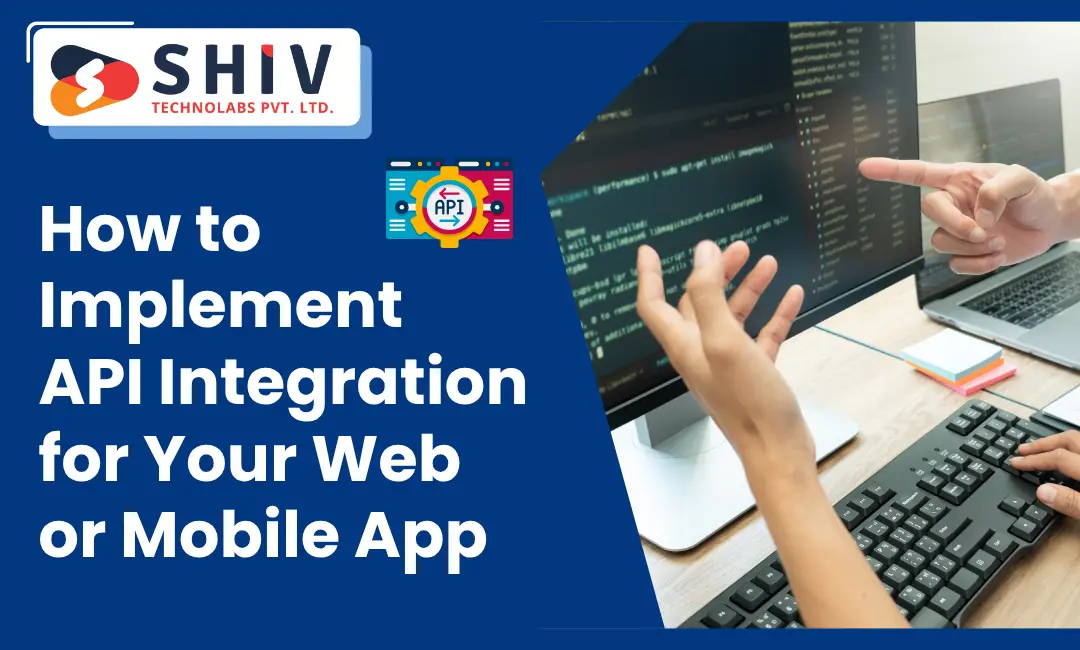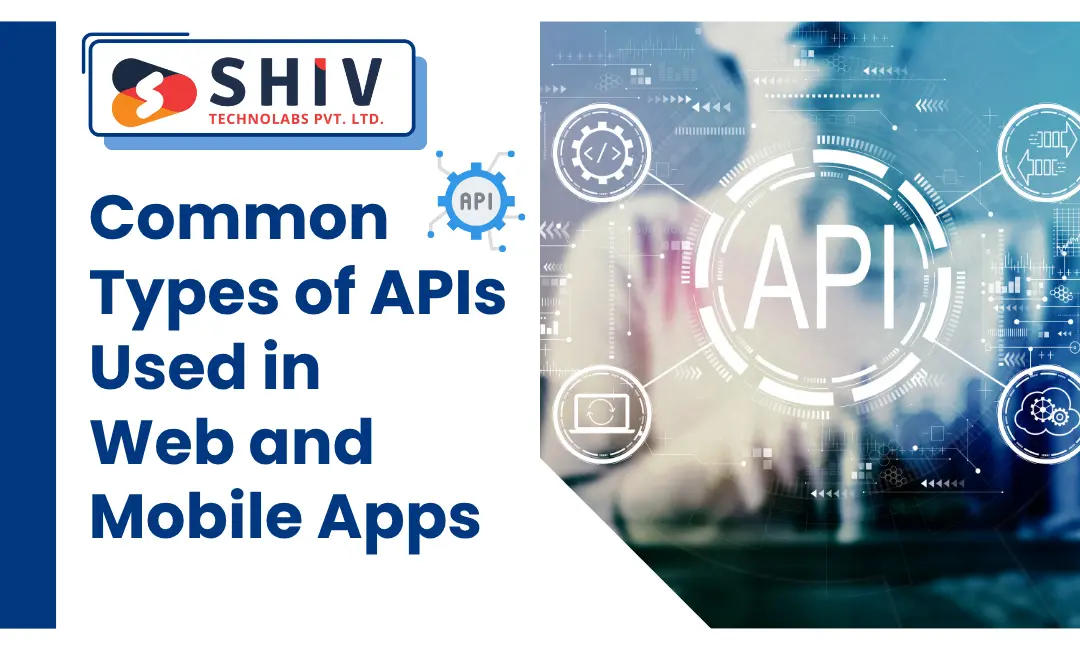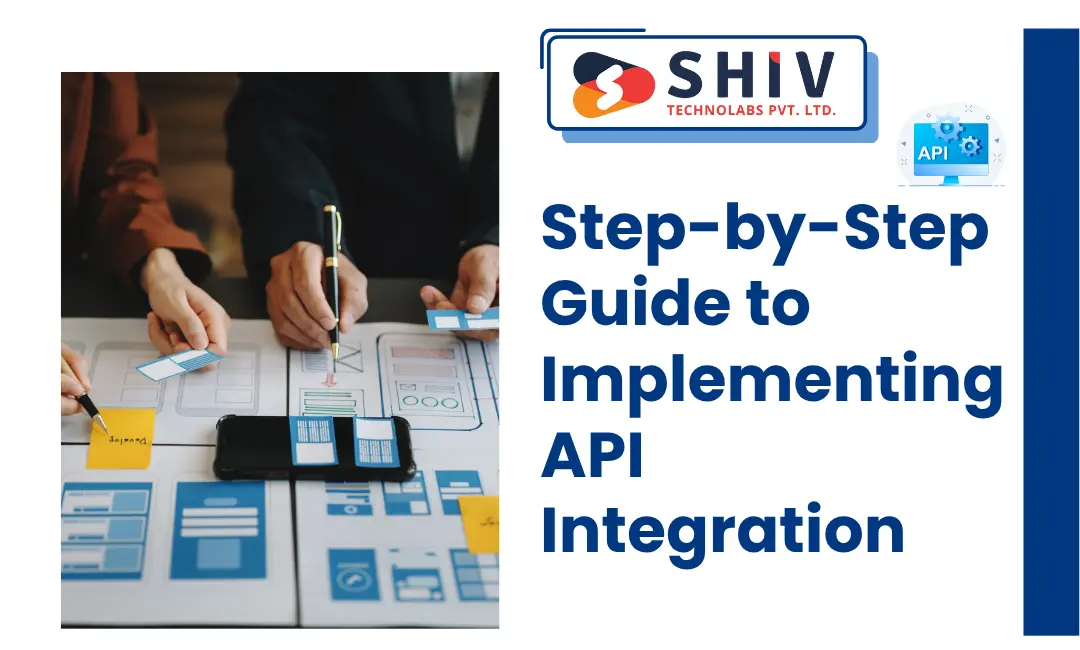
API integration plays a vital role in connecting apps with third-party systems, tools, and databases. It allows your web or mobile app to exchange information smoothly and execute key functions without building every feature from scratch. Whether it’s linking with a payment gateway, social login, or analytics tool, APIs make modern development faster and smarter.
This guide explains how to plan, build, and test an API integration properly. It also highlights how a Flutter App Development Company in USA can support businesses in creating powerful, connected applications with accurate data flow and reliable performance.
What Is API Integration and Why Does It Matter?
API stands for Application Programming Interface. It acts as a bridge between two systems, allowing them to communicate securely and share information.
For example, when a user signs into an app with Google or Facebook, the app connects to those platforms through their APIs.
APIs simplify development and reduce effort by offering pre-built components. Instead of writing thousands of lines of code to handle payments, maps, or logins, developers can connect to trusted APIs and focus on user experience.
Key Reasons Why API Integration Matters
- It reduces development time.
- It improves data accuracy by syncing systems automatically.
- It expands functionality without heavy coding.
- It allows apps to interact with popular third-party tools.
- It helps teams manage scalability more efficiently.
Common Types of APIs Used in Web and Mobile Apps

Understanding different API types helps you choose the right one for your project:
1. REST API
REST (Representational State Transfer) is the most popular type. It works over HTTP and uses simple JSON format for communication. It’s lightweight and ideal for mobile apps.
2. SOAP API
SOAP (Simple Object Access Protocol) uses XML to transfer data. It’s more structured and suitable for enterprise systems needing strict security and complex operations.
3. GraphQL API
GraphQL allows clients to request exactly what they need, reducing data load and improving performance for large-scale applications.
4. Webhooks
Webhooks send real-time data to other systems when specific events occur, such as order confirmation or new user signup.
Also read: Flutter for eCommerce Apps in the USA: Build Once, Sell Everywhere
Step-by-Step Guide to Implementing API Integration

Building an API integration requires strategic planning, coordination between teams, and continuous technical oversight. Below are the key steps that help businesses achieve smooth, secure, and scalable integrations.
Step 1: Define Business and Technical Objectives
Before any development starts, identify the exact purpose of your integration.
Determine which business process or user experience it will improve — such as faster transactions, centralized analytics, or easier customer onboarding.
Next, map the technical needs:
- Which systems or platforms need to connect?
- What data will be shared or fetched?
- Should the integration run in real time or on a scheduled basis?
Having these answers early aligns your business goals with your development roadmap.
Step 2: Analyze API Capabilities and Documentation
Every API provider offers documentation that defines what the API can and cannot do.
A skilled team reviews these details to evaluate compatibility, scalability, and limitations.
You should confirm:
- Supported request formats (REST, SOAP, or GraphQL).
- Data response size and latency.
- Authentication protocols and data protection standards.
A proper review helps your business avoid integration failures and select APIs that support long-term growth.
Step 3: Choose a Scalable Technology Framework
Selecting the right framework ensures your integration remains efficient as your user base grows.
For mobile projects, Flutter App Development Services in USA are widely adopted for their single-code architecture and strong API support.
Flutter allows developers to create high-performance apps that connect smoothly with payment, CRM, and analytics APIs.
On the backend, platforms like Node.js, Python, or PHP power reliable server communication.
The technology choice should align with your budget, target audience, and scalability plan.
Step 4: Focus on Security and Compliance
API integration involves sensitive data such as user information, transactions, or business insights.
It’s essential to use strong authentication mechanisms, encrypted communication, and secure storage of credentials.
Your system should also comply with relevant regulations like GDPR or CCPA if you serve global customers.
Maintaining strict security not only protects your app but also builds customer trust — a crucial factor for long-term success.
Step 5: Build Connection Layers and Data Mapping
At this stage, developers set up how data moves between systems.
Each endpoint, such as user details or payment status, must be correctly mapped to the destination field in your app.
Well-structured data mapping prevents errors and maintains consistency between different platforms.
Clear communication between frontend and backend teams ensures the app displays accurate data without performance issues.
Step 6: Conduct Functional and Load Testing
Before going live, every integration needs testing under different conditions.
Functional testing checks that each API request performs the expected task, while load testing measures how the app behaves under heavy traffic.
This process helps detect latency, timeout errors, and inconsistent responses.
Testing tools like Postman, JMeter, or in-house automation scripts help QA teams verify that your app delivers a stable user experience.
Step 7: Monitor, Update, and Maintain the Integration
Once the integration is live, ongoing monitoring becomes crucial.
Analytics tools track performance, uptime, and request success rates.
You should also monitor version updates released by API providers — as older endpoints may stop working.
Regular maintenance ensures your app remains compatible, secure, and fast.
A proactive support plan reduces downtime and keeps your business operations smooth.
Step 8: Measure Business Impact
The final step focuses on measurable outcomes.
Review key metrics such as improved data accuracy, reduced manual work, faster transactions, and higher customer satisfaction.
These numbers help evaluate ROI and guide decisions for future integrations or upgrades.
Businesses that analyze integration performance regularly gain a clear view of their digital transformation progress.
Also read: The Complete Guide to Android App Development for Enterprises
Best Practices for Successful API Integration
Following best practices ensures reliability and security in your app’s integration.
1. Prioritize Security
Use HTTPS for all API calls.
Store credentials safely and never expose them in the code.
Validate all inputs to protect against malicious data.
2. Handle Errors Gracefully
Provide clear messages when something goes wrong.
Use proper error codes and guide users with simple explanations.
3. Keep Data Consistent
Always validate and sanitize data before processing.
Avoid data duplication between multiple systems.
4. Improve Response Speed
Use caching where possible.
Avoid unnecessary API calls to keep your app responsive.
5. Maintain Documentation
Document your own API connections internally.
Future developers can understand and update the integration faster.
Real-World Examples of API Integration
Many businesses rely on APIs to deliver daily functions:
- Payment Gateways: Stripe, Razorpay, and PayPal handle transactions.
- Social Media Logins: Facebook and Google APIs simplify user onboarding.
- Geolocation Services: Google Maps API powers delivery and tracking features.
- Messaging Tools: Twilio and Firebase Cloud Messaging enable instant alerts.
- Analytics Tools: Google Analytics API tracks app engagement and conversions.
These examples show how APIs connect apps to global platforms in seconds.
Role of Flutter in API Integration
Flutter has changed how developers build mobile apps.
It allows developers to write once and run on both Android and iOS with the same performance and appearance.
Its simple structure and built-in libraries make it easy to integrate APIs for authentication, analytics, or payments.
With Flutter, you can connect REST or GraphQL APIs directly using HTTP requests or dedicated packages like dio or http.
Flutter’s reactive framework also helps display API data instantly when the backend updates.
Also read: Top Reasons Why Flutter App Development is Considered as a Perfect Choice for Startups
Benefits of Flutter App Development Services in USA
If you are planning a connected mobile app, Flutter App Development Services in USA can bring strong benefits to your project.
1. Cost-Effective Development
Flutter’s single codebase reduces the cost of creating apps for Android and iOS.
This helps startups and enterprises save resources without compromising quality.
2. Faster Development Time
Flutter supports hot reload, allowing developers to view changes instantly.
This feature shortens the testing and debugging phase significantly.
3. API-Friendly Structure
Flutter handles asynchronous calls easily.
It supports smooth API connections for payment, location, or user authentication systems.
4. Custom UI with Native Performance
Flutter apps look and feel like native apps.
It offers consistent performance, even with multiple APIs running in the background.
5. Active Developer Community
Flutter’s growing ecosystem means you’ll find ready-made plugins and long-term support for updates.
Cost and Availability of Flutter App Development Services in USA
The cost of Flutter app development depends on the project size, design complexity, and integration level.
On average, small to medium apps cost between $20,000 and $60,000 when developed by an experienced Flutter App Development Company in USA.
Larger enterprise projects can go beyond this range, depending on additional custom APIs or features.
The USA market has several skilled Flutter developers available for short-term or full-project contracts.
Most companies offer flexible engagement models — hourly, fixed-price, or dedicated developer plans — allowing you to choose what fits your budget and goals best.
The Future of Flutter App Development in the USA
Flutter’s popularity continues to grow as more businesses shift to cross-platform solutions.
Its capability to integrate advanced APIs — including AI, AR, and IoT — makes it a top choice for future-ready applications.
American enterprises prefer Flutter because it balances cost, performance, and flexibility in one platform.
Soon, Flutter will play a key role in developing high-performance business apps, e-commerce platforms, and smart connected systems.
It’s already being used by global brands for fintech, healthcare, and logistics solutions, and the adoption rate keeps rising.
Why Choose Shiv Technolabs – A Trusted Flutter App Development Company in USA
Partnering with a professional Flutter App Development Company in USA helps you build powerful, connected, and secure mobile applications that stand out in performance and design. Shiv Technolabs delivers reliable Flutter solutions tailored to your business goals with full API integration support. Our team focuses on creating fast, scalable, and user-friendly apps for every industry.
Our Flutter development services include:
- Cross-platform app development with a single codebase
- Secure API integration and data synchronization
- Custom UI/UX design for Android and iOS
- Real-time testing and performance monitoring
- Ongoing technical support and maintenance
If you’re ready to create a high-performing mobile app backed by modern technology, contact us to discuss your project requirements and get a personalized solution from our experts.
Conclusion
API integration forms the backbone of modern web and mobile applications, allowing multiple systems to function as one unified environment. A well-structured integration ensures real-time data flow, consistent performance, and better scalability for future upgrades. By applying structured planning, secure authentication, accurate data mapping, and continuous monitoring, developers can maintain high application reliability. Testing and documentation further help detect issues early and sustain long-term stability. With strong API architecture and clear protocols, businesses can support faster development cycles, reduce operational errors, and deliver connected user experiences across platforms.